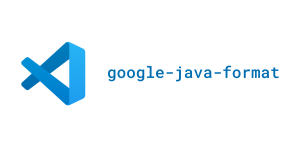
In the realm of software development, code readability and consistency are crucial for the maintainability and scalability of projects. The Google Java Coding Style represents a set of guidelines designed to standardize Java code, making it more organized and comprehensible for developers across the globe.
The Essence of Google Java Coding Standards
Google’s coding standards for Java are not just about formatting details but embody a philosophy geared toward improving code clarity and the quality of programming. This style guide covers various aspects of Java programming, from naming conventions and file organization to rules for programming practices and documentation.
Why Adopt Google Java Coding Style?
Adopting the Google Java Coding Style ensures consistency in code structure across teams and projects. It reduces ambiguity in coding, making the codebase more approachable and manageable, especially for large-scale projects. By adhering to these standards, developers can avoid common coding pitfalls and enhance overall code quality.
Impact on Collaborative Development
In collaborative environments, the Google Java Coding Style serves as a common language, bridging gaps between individual coding habits. It aids in creating a cohesive development culture, fostering better collaboration, and easing the onboarding process for new team members.
Setting Up Google Java Format in Your IDE
Implementing Google’s Java Coding Style starts with configuring your development environment. Most modern IDEs support Google Java Format, either natively or through plugins. Here’s how to set it up in some of the most popular Java IDEs.
Eclipse

- Install the Google Java Format Plugin: Eclipse users can install the Google Java Format plugin directly from the Eclipse Marketplace. Search for “Google Java Format” and install the plugin.
- Configure Formatter: Once installed, go to Window > Preferences > Java > Code Style > Formatter and select the Google formatter.
- Apply and Save: Apply the changes and save the configuration. Your code will now automatically be formatted according to Google’s standards.
IntelliJ IDEA

- Plugin Installation: In IntelliJ IDEA, go to Settings > Plugins, search for “Google Java Format”, and install the plugin.
- Activate Formatter: After installation, enable the formatter by going to Settings > Editor > Code Style > Java, and select the Google Java Format as the current scheme.
- Code Reformatting: Use the Code > Reformat Code option to apply Google’s coding style to your existing code.
Visual Studio Code

- Extension Installation: For Visual Studio Code users, install the Google Java Format extension from the VS Code marketplace.
- Configure Settings: Adjust the settings to use the Google formatter for Java files. This can be done in the settings.json file.
- Format on Save: Enable the “Format on Save” feature to automatically format your code every time you save a file.
Automating Format Checks
In addition to manual formatting, you can configure your IDE to alert you when the code does not comply with Google’s standards. This proactive approach ensures that all code committed to your repository adheres to these guidelines.
By setting up Google Java Format in your IDE, you take a significant step towards maintaining code consistency and readability in your Java projects. The next sections will cover integrating this format with build tools like Gradle and Maven, best practices, advanced tips, and troubleshooting common issues.
Integrating Google Java Format with Build Tools
Integrating Google Java Format with build tools like Gradle and Maven ensures that your project adheres to consistent coding styles throughout the development lifecycle. This integration automates the formatting process, making it a seamless part of your build workflow.
Configuring Google Java Format in Gradle
Gradle, a popular build automation tool, can be configured to use Google Java Format with a few simple steps:
Add the Plugin Dependency: In your build.gradle file, add the Google Java Format plugin as a dependency:
plugins {
id “com.github.sherter.google-java-format” version “0.9”
}
Apply the Plugin: Apply the plugin to your project:
apply plugin: ‘com.github.sherter.google-java-format’
Configure the Task: Configure the formatting task to automatically format your source code according to Google’s standards:
googleJavaFormat {
toolVersion = ‘1.7’ // Specify the desired version
}
Run the Format Task: Execute the format task to format your project’s code:
./gradlew googleJavaFormat
Using Google Java Format with Maven
Maven, another widely used build tool, can also be set up to use Google Java Format:
Plugin Configuration: In your project’s pom., add the following plugin configuration:
<plugin>
<groupId>com.coveo</groupId>
<artifactId>fmt-maven-plugin</artifactId>
<version>2.10</version>
<executions>
<execution>
<goals>
<goal>format</goal>
</goals>
</execution>
</executions>
</plugin>
Running the Formatter: To format your project’s code, run the following Maven
command:
mvn fmt:format
Benefits of Build Tool Integration
By integrating Google Java Format with Gradle and Maven, you can:
- Ensure that every build of your project adheres to a consistent coding style.
- Automatically format code during the build process.
- Reduce the time spent on manually formatting code.
- Make code style consistency checks a part of your continuous integration pipeline.
Best Practices for Consistent Java Code Formatting
Adopting the Google Java Coding Style is just the first step. Ensuring consistent application of these standards across your projects requires a combination of best practices, discipline, and the right tools.
Embrace the Style Guide Fully
- Understand the Guidelines: Familiarize yourself with the Google Java Style Guide. Understanding the rationale behind each guideline can help in adopting them more effectively.
- Consistency is Key: Apply the coding standards consistently across all your projects. Consistency is crucial for the long-term maintainability of the code.
Leverage Tools for Enforcement
- IDE Configuration: As previously discussed, configure your IDE to automatically apply Google’s Java formatting. This reduces the need for manual formatting.
- Use Build Tools: Integrate formatting checks into your build process using Gradle or Maven. This ensures that any code that doesn’t adhere to the style guide is caught early.
Conduct Regular Code Reviews
- Peer Review: Incorporate code reviews into your development process. Peers can help identify deviations from the coding standards.
- Automated Review Tools: Utilize tools like static code analyzers that can automatically detect and report deviations from the style guide.
Continuous Integration and Automation
- CI Pipelines: Integrate code formatting checks into your Continuous Integration (CI) pipelines. This ensures that code style is enforced at every stage of development.
- Pre-commit Hooks: Use pre-commit hooks in your version control system to automatically check and format code before each commit.
Documenting Exceptions
- When to Deviate: While consistency is important, there may be cases where adhering strictly to the style guide is not practical. Document these exceptions clearly in your project’s documentation.
- Maintain Clarity: Any deviation should still aim to maintain code clarity and readability.
Training and Onboarding
- Educate Team Members: Ensure that all team members are trained on the Google Java Coding Style. This is especially important for new hires.
- Provide Resources: Make style guides and tools readily available to all developers.
By following these best practices, you can ensure that the Google Java Coding Style is effectively implemented and maintained across your Java projects.
Advanced Tips for Google Java Coding Style
While basic adherence to the Google Java Coding Style can significantly improve code readability and consistency, mastering its advanced aspects can elevate your coding practice to new heights. Here are some advanced tips:
Embrace the Philosophy Behind the Style Guide
- Understand the ‘Why’: Beyond the mechanics of formatting, understanding the philosophy behind Google’s guidelines can help you make better coding decisions, especially in ambiguous situations.
- Focus on Readability and Maintainability: Google’s style guide prioritizes code readability and maintainability. Always keep these principles in mind when writing code.
Utilize Advanced IDE Features
- Custom Inspections: In IDEs like IntelliJ IDEA, create custom inspections that align with Google’s style guide. This can help catch subtle style deviations.
- Refactoring Tools: Leverage your IDE’s refactoring tools to align your code with the style guide, especially for large codebases.
Integrate with Version Control Systems
- Branch Policies: Implement branch policies in your version control system (like Git) to ensure that code adhering to the style guide is maintained throughout the development process.
- Code Formatting in Pull Requests: Enforce code formatting checks in pull requests to ensure that only code compliant with Google’s style guide is merged.
Continuous Learning and Adaptation
- Stay Updated: The Google Java Coding Style may evolve over time. Keep yourself updated with the latest changes and best practices.
- Feedback Loop: Encourage feedback from team members on the style guide’s application and continuously refine your approach.
Explore Complementary Tools
- Code Quality Tools: Use code quality tools like SonarQube, which can be configured to align with Google’s Java Coding Style, to monitor and improve the quality of your code.
- Automated Code Review Tools: Tools like CodeGuru or Reviewable can provide automated code reviews, offering insights and suggestions aligned with Google’s standards.
By applying these advanced tips, you can more deeply integrate Google’s Java Coding Style into your development workflow, resulting in cleaner, more efficient, and maintainable Java code.
Automating Code Formatting in Java Projects
Automation is key in maintaining a consistent coding style across a project or team. Automating the formatting process according to the Google Java Coding Style can save time, reduce human error, and ensure that code standards are uniformly applied.
Incorporating Formatting into the Build Process
- Build Tool Integration: As previously discussed, integrate Google Java Format into your build tools like Gradle or Maven. This ensures that every build of your project is automatically formatted.
- Custom Build Tasks: Create custom tasks in your build scripts to automatically format code or check for style violations as part of the build process.
Utilizing Continuous Integration (CI) Tools
- CI Pipeline Configuration: Configure your CI pipeline to include a step that checks code formatting. Tools like Jenkins, CircleCI, or GitHub Actions can be used to automate this process.
- Failing Builds for Non-compliance: Set up your CI pipeline to fail the build if code does not comply with the Google Java Coding Style. This ensures that all merged code adheres to the standard.
Pre-commit Hooks in Version Control
- Git Hooks: Use Git hooks, such as pre-commit or pre-push, to automatically format code or check for style compliance before committing or pushing code.
- Shared Hook Configuration: Share the Git hook configurations with all team members to ensure consistency across the team.
Using Automated Formatting Tools
- IDE Plugins: Leverage plugins in your IDE that automatically format code on save or during editing.
- Third-party Tools: Consider using third-party tools like Spotless or Checkstyle, which can be configured to enforce the Google Java Coding Style.
Regular Code Audits
- Scheduled Code Audits: Periodically run code audits using your automated tools to identify and rectify any deviations from the style guide.
- Code Quality Metrics: Monitor code quality metrics to ensure adherence to the style guide and identify areas for improvement.
By automating code formatting in your Java projects, you can ensure that the Google Java Coding Style is consistently applied, leading to a more readable and maintainable codebase.
Troubleshooting Common Issues with Google Java Format
Adopting any new coding standard, including the Google Java Coding Style, can come with its set of challenges. Here are some common issues and how to address them:
- Issue 1: Inconsistent Formatting Across IDEs
Problem: Different IDEs or versions may interpret formatting rules slightly differently.
Solution: Ensure all team members use the same version of the IDE and Google Java Format plugin. Consider using an IDE-independent tool like a pre-commit hook for consistent formatting. - Issue 2: Integration Problems with Build Tools
Problem: Difficulty in integrating Google Java Format with existing Gradle or Maven setups.
Solution: Review the plugin documentation for compatibility notes. Check for version conflicts between the build tool and the formatting plugin. If issues persist, seek support from community forums or the plugin’s issue tracker. - Issue 3: Large Codebases with Pre-existing Formatting
Problem: Applying Google Java Format to a large, pre-existing codebase can create massive diffs, complicating code reviews.
Solution: Gradually apply the formatting to parts of the codebase, module by module, or file by file. Alternatively, format the entire codebase in a single, separate commit to distinguish style changes from functional changes. - Issue 4: Performance Overhead in CI/CD Pipelines
Problem: Running formatting checks in CI/CD pipelines adds overhead to the build process.
Solution: Optimize the CI/CD pipeline to run formatting checks only when necessary, such as when Java files are modified. Cache results where possible to avoid redundant checks. - Issue 5: Disagreements Over Style Choices
Problem: Team members may disagree with certain style choices prescribed by Google Java Format.
Solution: Encourage a team discussion on the benefits of a unified coding style. Highlight the advantages of Google Java Format in terms of readability and maintenance. For contentious issues, consider team voting or consult with a senior developer for a decision.
By addressing these common issues, teams can more effectively implement and benefit from the Google Java Coding Style, leading to cleaner, more consistent, and more maintainable Java code.
FAQ about Google Java Coding Style
What is Google Java coding style and why is it important?
Google Java coding style is a set of guidelines developed by Google to standardize Java code formatting and practices. It’s important because it enhances code readability, consistency, and maintainability, especially in large-scale projects or teams. Adhering to a common coding standard, like Google’s, makes it easier for developers to understand, share, and collaborate on code.
How do I set up Google Java format in my IDE?
To set up Google Java format in your IDE, you need to install a plugin or extension that supports it. For instance, in Eclipse, you can install the Google Java Format plugin from the Eclipse Marketplace; in IntelliJ IDEA, you can find the plugin in the IDE’s plugin settings; and for Visual Studio Code, you can install it from the VS Code marketplace. Once installed, configure the plugin according to your project needs.
What are the benefits of using Gradle and Maven plugins for Java formatting?
Using Gradle and Maven plugins for Java formatting automates the process of applying Google Java coding style to your code. This ensures consistency across the project and reduces the need for manual formatting. It also helps in maintaining a standard code style across different team members and integrates seamlessly into the build process, enhancing overall development efficiency.
